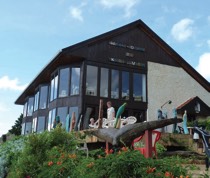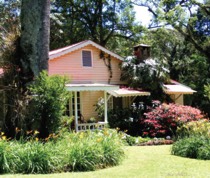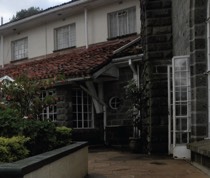Western Kenya: Marathon Champs and the Nandi Bear
Kenya's marathon runners have long been winning events around the world, and you can train with them in the highlands of Western Kenya if you dare. And while you're in Western, how about chasing down the myth - or truth - of the infamous Nandi Bear?
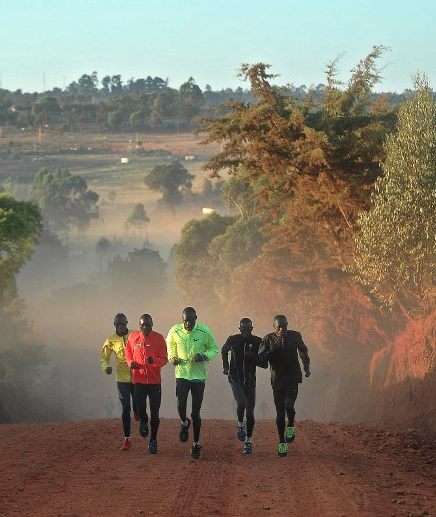
Run with the marathon runners at Iten
Kenya is rightly famous for its record smashing marathon runners – and what could be more of a thrill than running with them? Head for Iten to train with the best.
Iten sits atop a striking escarpment, the land before it plunging jaw-droppingly into Kerio Valley far below. But despite the extraordinary beauty of the site, its waterfalls and gorges, wildlife and caves, aren’t the biggest attraction for visitors. Iten has a reputation greater even than this: it’s home to Kenya’s marathon champions.
In October 2019, the running world as a whole held its breath as Eliud Kipchoge broke the two-hour marathon, making a new world record of one hour, 59 minutes and 40 seconds. However, this eight-time marathon winner and three-time Olympic medallist is only one of many Kenyan marathon champions. Watch any of the major races around the world and you’ll see Kenyans posing on podiums and snapping up medals. The majority of these marathon winners come from Iten – and those that aren’t born here come here to train.
There are training camps aplenty in the region. Some are managed by last year’s marathon winners, others by the coaches who coach them. Churning out next year’s champions, these camps are elite and professional. Most famous is the High Altitude Training Centre. With a fully kitted out gym and a ream of staff including instructors, coaches and physiotherapists, this place will tighten, tone and train all who enter its doors. The area is home to plenty more training camps and training groups and you’re sure to find one that suits your purpose.
For total immersion in the running world, stay at your training camp. Should you prefer a bit of time out, choose to stay at one of the many guesthouses or lodges nearby and give yourself a breather. Possibly, just possibly, when you’ve trained with the best, you’ll be ready to enter the famous Safaricom Lewa Marathon and compete with the professionals at Kenya’s most revered running event.
Search for the Nandi Bear
You’ve probably heard of the Nandi Bear, but have you considered going in search of this ferocious predator? Grasp your courage in both hands and take to the forests to prove, once and for all, whether this is a myth or a monster.
The creature is described as thick and stocky, with strong shoulders and a sloping back, a pointed snout and razor-sharp teeth, thick fur and a shaggy mane. With five toes tipped with spiked claws, it’s forte is to skulk from the forests to decapitate people and eat their brains. The Kalenjin people of the area called the creature chemosit, or devil.
From the 17thcentury, gory stories abound, of mounds of headless animals, of labourers found with their skulls crushed, of women beheaded while doing laundry at the river. While the British colonials were at first sceptical about these stories, it wasn’t long before they too starting reporting sightings. Their reports are graphic. Variously they describe teeth bigger than a lion, slavering jaws, blazing red eyes and a moaning cry. The beast was able to crash through six-foot thorn fences, a feat even man-eating lions and leopards were unable to achieve, and to break down doors to devour the brains of those cowering inside.
Doubters have surmised that the Nandi Bear was in fact a giant forest hyena, a huge baboon, a honey badger or a massive aardvark. Bewilderment arose when the animals were killed but their carcases vanished; yet more astonishment occurred when bears’ remains were sent to museums but disappeared. In 1936 Jesse R Coope sent the skull of a beast shot in the Mau Forest to the British Museum. In 1957 Douglas Hutton sent two skeletons shot on Chemoni Tea Estate to Nairobi National Museum. Neither museum has any record of this.
Stories of sightings crop up all over Western Kenya and into Uganda, Rwanda and South Sudan so your search might be arduous. The lush forests of the Uasin Gushu Plateau, the Nandi Hills and the Mau Forest would be a good place to start, especially around Kapsabet and Kapsowar. But the creature has also been seen on the slopes of Mt Elgon and along the Magadi Railway. Be vigilant. And most importantly – hold on to your head!
Tamara Britten, 17 August 2021
Published also in: Travelog Magazine: The Standard
About the region
Western Kenya
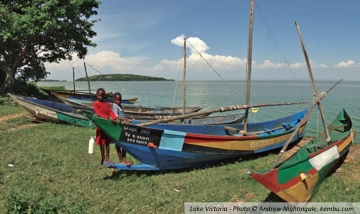
Mountainous and fertile Western Kenya is blanketed in lush green plantations of famed Kenyan tea. At its western edge, the region meets Lake Victoria, the source of the Nile. Other highlights include Mt Elgon, Kakamega Forest National Reserve, Ruma National Park, Saiwa Swamp National Park, Cherangani Hills and Kerio Valley.
Read more about Western KenyaWhere to stay
From this idyllic spot on the escarpment, Kerio View has panoramic views over the stunning Kerio Valley. Its glass-fronted restaurant and cottages ensure magnificent views on all sides. There are 28 en-suite rooms, including 16 rooms built in 2009, made up of singles, doubles and triples. The rooms ...
Rondo was built by a saw miller at the base of a towering Elgon Olive in 1948, and left to the Christian Council of Kenya in 1961. In 1966, the Trinity Fellowship took over and ran it as a youth centre and orphanage. Now a hospitable homestead, it ...
Tea was first cultivated in the highlands around Kericho in the 1920s. Today more than 110,000 hectares are devoted to tea, producing 215 million kilos of tea per year and bringing in 17-20% of Kenya’s export revenue. The Tea Hotel started life as the guesthouse for ...
